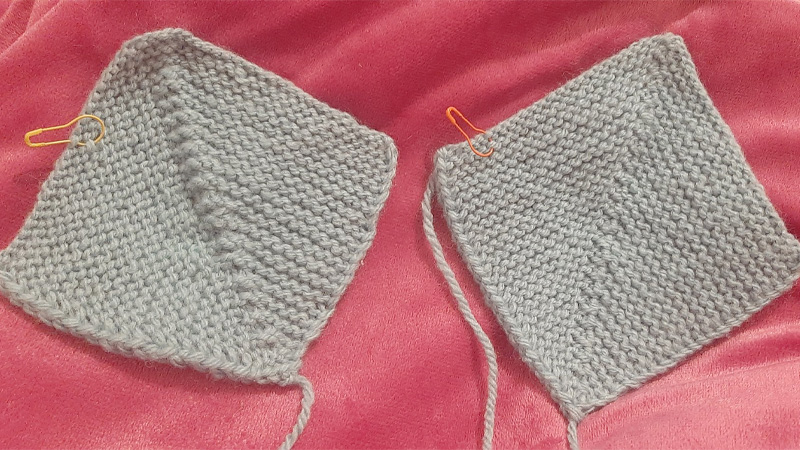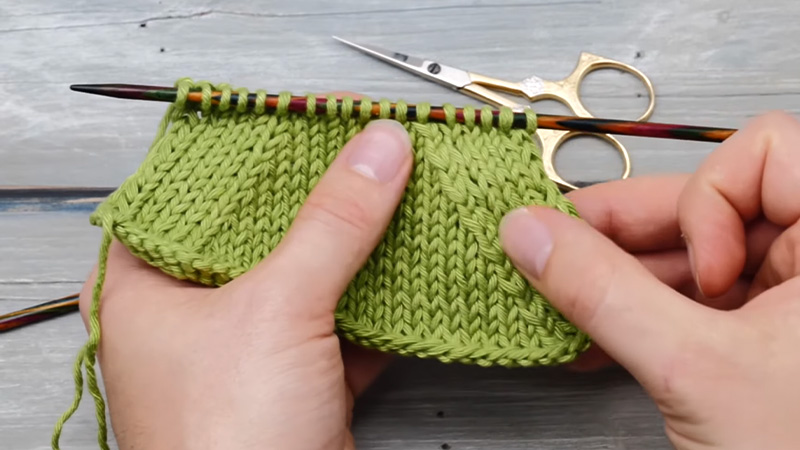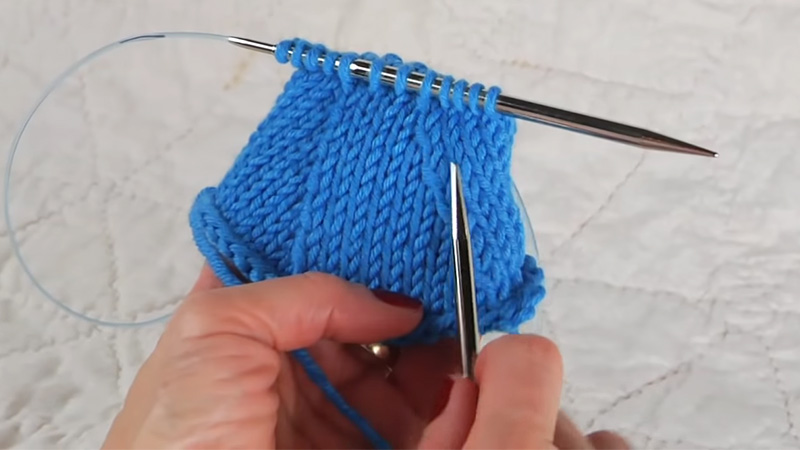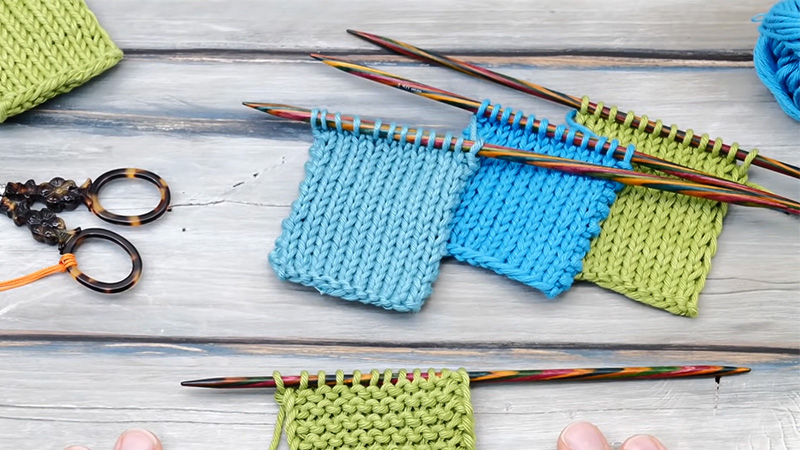Knitting is a timeless craft that weaves together creativity, precision, and artistry. Among the arsenal of techniques available to knitters, “SSK” or “Slip, Slip, Knit” stands out as a fundamental yet versatile method.
SSK is the key to creating graceful left-leaning decreases, making it indispensable for shaping garments, crafting decorative edges, and adding texture to various knitting patterns.
In this introduction, we embark on a journey into the world of SSK, exploring the steps, nuances, and possibilities this technique offers.
From mastering the basic mechanics to delving into its applications in diverse stitch patterns, we’ll unlock the secrets to mastering How to SSK in Knitting.

What Is SSK In Knitting?
In knitting, “SSK” stands for “Slip, Slip, Knit,” and it is a commonly used decrease technique. SSK creates a left-leaning decrease that slants to the left side of your knitting work, making it an essential component for shaping garments, creating decorative edges, and adding texture to various knitting patterns.
To execute an SSK, follow these steps: slip the first stitch from the left-hand needle to the right-hand needle as if to knit, then slip the second stitch in the same manner. Afterward, insert the left-hand needle into the front loops of both slipped stitches and knit them together.
The result is a single stitch decrease that leans gracefully to the left, providing balance and visual interest to your knitting projects. SSK is often paired with its counterpart, K2Tog (Knit Two Together), to achieve symmetrical shaping and intricate stitch patterns.
How To SSK In Knitting?

Here are some simple methods to perform the SSK (Slip, Slip, Knit) decrease in knitting:
Traditional SSK
Slip the first stitch knitwise onto the right-hand needle, then slip the second stitch knitwise as well. Insert the left-hand needle into the front loops of both slipped stitches and knit them together. This creates a left-leaning decrease, ideal for shaping garments.
Slip-Slip
Slip the first stitch knitwise onto the right-hand needle, then slip the second stitch knitwise as well. Afterward, insert the left-hand needle into the front loops of both slipped stitches and slip them back into the left-hand needle.
Now, insert the right-hand needle into the front loops of the two stitches on the left-hand needle and knit them together. This method achieves the same result as the traditional SSK but with a slight variation in technique.
Purlwise SSK
This method is used when working on the purl side of the fabric. Slip the first stitch purlwise, then slip the second stitch purlwise as well. Insert the left-hand needle into the front loops of both slipped stitches and purl them together. It creates a left-leaning decrease on the purl side of your work.
Through the Back Loops (TBL) SSK
Slip the first stitch knitwise onto the right-hand needle, then slip the second stitch knitwise as well. Insert the left-hand needle into the back loops of both slipped stitches and knit them together. This variation of the SSK tightens the decrease slightly.
Left-Slanting Decrease
For a more pronounced left-slanting decrease, slip the first stitch knitwise onto the right-hand needle, then slip the second stitch purlwise. Insert the left-hand needle into the front loops of both slipped stitches and knit them together. This method creates a more prominent left-leaning decrease.
Combined SSK
Slip the first stitch knitwise onto the right-hand needle, then slip the second stitch purlwise. Insert the left-hand needle into the front loops of both slipped stitches and knit them together.
The combined SSK decreases stitches while twisting them, which can be useful for specific stitch patterns.
One-Step SSK
In a one-step SSK, you slip both stitches knitwise onto the right-hand needle simultaneously. Then, insert the left-hand needle into the front loops of the two slipped stitches and knit them together. This streamlined method simplifies the SSK decrease.
These methods offer flexibility in achieving different effects and textures in your knitting projects while incorporating the left-slanting SSK decrease. Choosing the right method depends on your pattern and design preferences.
Creative Patterns For SSK In Knitting

Here are some creative knitting patterns that incorporate the SSK (Slip, Slip, Knit) decrease to create beautiful textures and designs:
Lace Patterns
SSK is a staple in lace knitting patterns, where it’s used alongside yarn overs and other stitches to create intricate, openwork designs. From delicate shawls to elegant doilies, lace patterns often feature SSK to achieve the desired lacy and airy texture.
Eyelet Patterns
Eyelet patterns often incorporate SSK to create decorative openings or “eyelets” in the fabric. These patterns are versatile and can be used in various knitting projects, including scarves, baby blankets, and summer tops.
Twisted Stitches
SSK can be paired with twisted stitches to create stunning, visually striking patterns. By crossing stitches over one another, you can achieve cable-like textures without using a cable needle. This technique adds depth and dimension to your knitting.
Leaf and Vine Motifs
For nature-inspired designs, SSK can be employed to shape leaves and vines in your knitting projects. Whether you’re working on a botanical-themed blanket or a pair of cozy mittens, these motifs add a touch of elegance to your work.
Scalloped Edges
SSK is often used to shape scalloped edges in knitting, which are perfect for finishing hems, cuffs, and collars. The gently curved edges create a feminine and delicate look, making them ideal for baby clothing and accessories.
Dropped Stitch Patterns
SSK can be integrated into dropped stitch patterns, where you intentionally drop stitches to create elongated, lacy columns. This technique is popular in designs like drop-stitch scarves and openwork sweaters.
Fair Isle and Colorwork
In colorwork knitting, SSK can be used to decrease stitches while maintaining the color pattern. It helps shape colorwork projects such as stranded mittens, hats, and sweaters while ensuring that the pattern remains intact.
These creative patterns showcase the versatility of the SSK decrease and its ability to enhance the aesthetic appeal of your knitting projects.
By experimenting with different stitch combinations and techniques, you can create unique and visually captivating designs.
Mistakes To Avoid While Doing SSK In Knitting

Avoiding common mistakes while executing the SSK (Slip, Slip, Knit) decrease in knitting is crucial to achieving clean, polished results. Here are some mistakes to be mindful of:
Incomplete Slips
Failing to slip the stitches correctly can lead to uneven or twisted decreases. Ensure you slip each stitch knitwise onto the right-hand needle individually, taking care not to twist them.
Incorrect Needle Placement
When knitting the two slipped stitches together, it’s important to insert the left-hand needle into the front loops of both stitches. Inserting it incorrectly can result in twisted or misshapen decreases.
Uneven Tension
Inconsistent tension while performing the SSK can lead to irregular stitches and an uneven appearance in your knitting. Pay attention to maintaining even tension throughout the decrease to achieve a smooth and balanced fabric.
Skipping Over Decreases
It’s easy to overlook SSK decreases, especially in intricate patterns or when working on multiple decreases in a row. Double-check your knitting to ensure you haven’t missed any SSKs in your project.
Incorrect Stitch Count
When working on patterns that require a specific stitch count, failing to execute the correct number of SSK decreases can disrupt the design. Always follow the pattern instructions and count your stitches accurately.
Not Checking Gauge
Ignoring gauge recommendations for your project can result in unexpected outcomes. If your SSK decreases are too loose or too tight compared to the specified gauge, your finished piece may not fit properly or look as intended.
Rushing Through
Knitting too quickly without paying attention to each SSK can lead to errors. Take your time, especially when executing decreases in intricate patterns, to ensure precision and avoid mistakes that may be challenging to correct later.
By being aware of these common pitfalls and practicing good knitting habits, you can enhance the quality of your SSK decreases, ensuring they contribute to a neat and professional finish in your knitting projects.
FAQs
What is SSK in knitting, and why is it used?
SSK, which stands for “Slip, Slip, Knit,” is a knitting decrease technique. It’s used to create a left-leaning decrease, which is valuable for shaping projects and adding decorative elements to knitting patterns.
How do I perform an SSK in knitting?
To execute an SSK, follow these steps: Slip the first stitch knitwise onto the right-hand needle, then slip the second stitch knitwise as well. Insert the left-hand needle into the front loops of both slipped stitches and knit them together.
Can I reverse an SSK if I make a mistake?
Yes, you can reverse an SSK by carefully unknitting or “knitting” back to the decrease row. Once you’ve reached the row with the SSK, you can then rework the decrease correctly.
Are there variations of the SSK decrease?
There are variations of the SSK decrease, such as a “slip-slip” variant, which involves a different slipping technique. These variations may be used depending on the desired effect in your knitting pattern.
When should I use SSK in my knitting projects?
SSK is used whenever a left-leaning decrease is required. Common applications include shaping sleeves, necklines, and garment edges, as well as creating decorative stitch patterns like lace and cables.
Conclusion
As we conclude our exploration of “How to SSK in Knitting,” we’re reminded that knitting is more than just a craft; it’s an art form that allows us to transform yarn into beautiful, tangible creations.
SSK, with its elegant left-leaning decreases, is a tool that empowers knitters to bring their unique visions to life. It’s the delicate curve of a shawl’s edge, the intricate lace of a baby blanket, and the precise shaping of a cozy sweater.
Whether you’re a beginner or an experienced knitter, the mastery of SSK opens doors to limitless possibilities where imagination meets skill. With each slip, each knit, and each project, you not only create tangible pieces but also weave stories and memories into every stitch.
So, embrace the art of SSK, let your creativity soar, and revel in the rich tapestry of the knitting world.
Leave a Reply